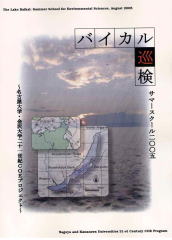Transport and deposit of harmful substances through “Kosa”in Pan-Japan Sea area
Tsutomu
Sato, Ph. D., Associate Professor |
 |
Yellow sand or kosa as it is known in Japan, are airborne particles (dust) from the arid inland parts of central Asia carried by the prevailing westerlies. The flight of these airborne particles has received wider attention due to its environmental consequences, both positive (i.e. cool the atmosphere and nutrient contribution in oceans) and negative (i.e health effects and air navigation disturbances), on the Pan-Japan Sea area. Although numerous studies have been conducted on its provenance, distribution and composition, a few more issues have not been dealt with. Yellow sands have a significant amount of loess-derived materials, which comprises clay minerals, oxyhydroxides and organic matter that have not been given an in-depth study. These materials may play an important role in the transport of toxic contaminants through the troposphere due to their high reactivity and enormous surface area favorable as reaction media.
Our previous studies deal with the migration of harmful elements such as uranium and arsenic in geologic materials, and their impacts in mining drainage areas and radioactive waste disposal sites for safety assessments. Our studies have shown that the migration behaviors of toxic elements are governed by their interactions with clay minerals and Fe-oxyhydroxides, which are ubiquitous in the natural environment. The concentrations of toxic contaminants in these geologic materials are relatively minor, but may contribute greatly to contaminant cycling in the natural environment. Similar geologic materials abound in the loess-derived component of airborne yellow sands. It can be predicted that contaminant cycling through the movement and distribution of yellow sands will be governed by similar contributions observed in our previous studies.
In this study, we would focus on the migration and deposit of toxic heavy metals and polycyclic aromatic hydrocarbons (PAHs; considered being carcinogenic and endocrine-disrupting chemicals) through the movement of the yellow sands in the Pan-Japan Sea area and understand their environmental consequences in the Pan Japan Sea area.



